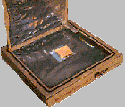All About Solar Cookers 6




Overcoming fuel shortages in developing nations
The energy problem is far more extreme in less-developed parts of the world than in the United States. In places like eastern Africa, natives have trouble finding sufficient firewood to cook dinner or heat water to kill bacteria. Women sometimes walk 20 to 30 miles to obtain only a two-day supply of cooking fuel.
The simple solar box cooker is helping people to stay healthy in places such as Zimbabwe, Bolivia, Guatemala, Kenya, Haiti, and Pakistan. In Botswana in 1988, for example, solar box cookers were introduced because of a 50 percent malnutrition rate. This devastating health problem was not caused by food shortages but by a lack of fuel.
Two Arizona women created these cookers, Barbara Kerr, a nurse from Taylor, Arizona, and Sherry Cole, a former freelance writer from Tempe. Their solar box cookers reach temperatures as high as 325 degrees Fahrenheit and easily kill cholera bacteria at 150 degrees. The cookers are constructed with two corrugated boxes, one smaller than the other, 100 feet of aluminum foil, a pint of glue, a lot of newspaper, and a sheet of glass.
Kerr, and Cole’s first box cooker was created in the 1970s, and the first sale went to microbiologist Bob Metcalf of California University in Sacramento. Metcalf formed the organization Solar Box Cookers International in 1987 to promote the cookers for health and environmental benefits worldwide. The group’s expeditions have received support from the Pillsbury Co. Meals for Millions Applied Nutrition Project, Foster Parents Plan and Food Industry Crusade Against Hunger.
In Guatemala in 1988, Metcalf introduced solar box cookers to women in rural areas who spent one-third of their time gathering firewood. So many trees had been chopped-down that hillsides were eroding during seasonal rains and ecosystems had been destroyed.
Most people in Kenya do not have electricity and many do not have running water. Before the box cooker, meals were often prepared over a stone hearth with a wood fire. Solar cookers reduced the need for constant, tedious fuel gathering.
Solar cookers offer many other benefits to people in developing nation. They eliminate the toxins common to foods cooked directly over a fire and prevent health problems caused by constant exposure to smoke and fire.
The cookers are also used to heat and purify water. Bacteria in water are a primary cause of chronic diarrhea, which contributes to thousands of cases of infant malnutrition and death.
Next Article: - All About Solar Cookers 7 - Making a Solar Panel Cooker



